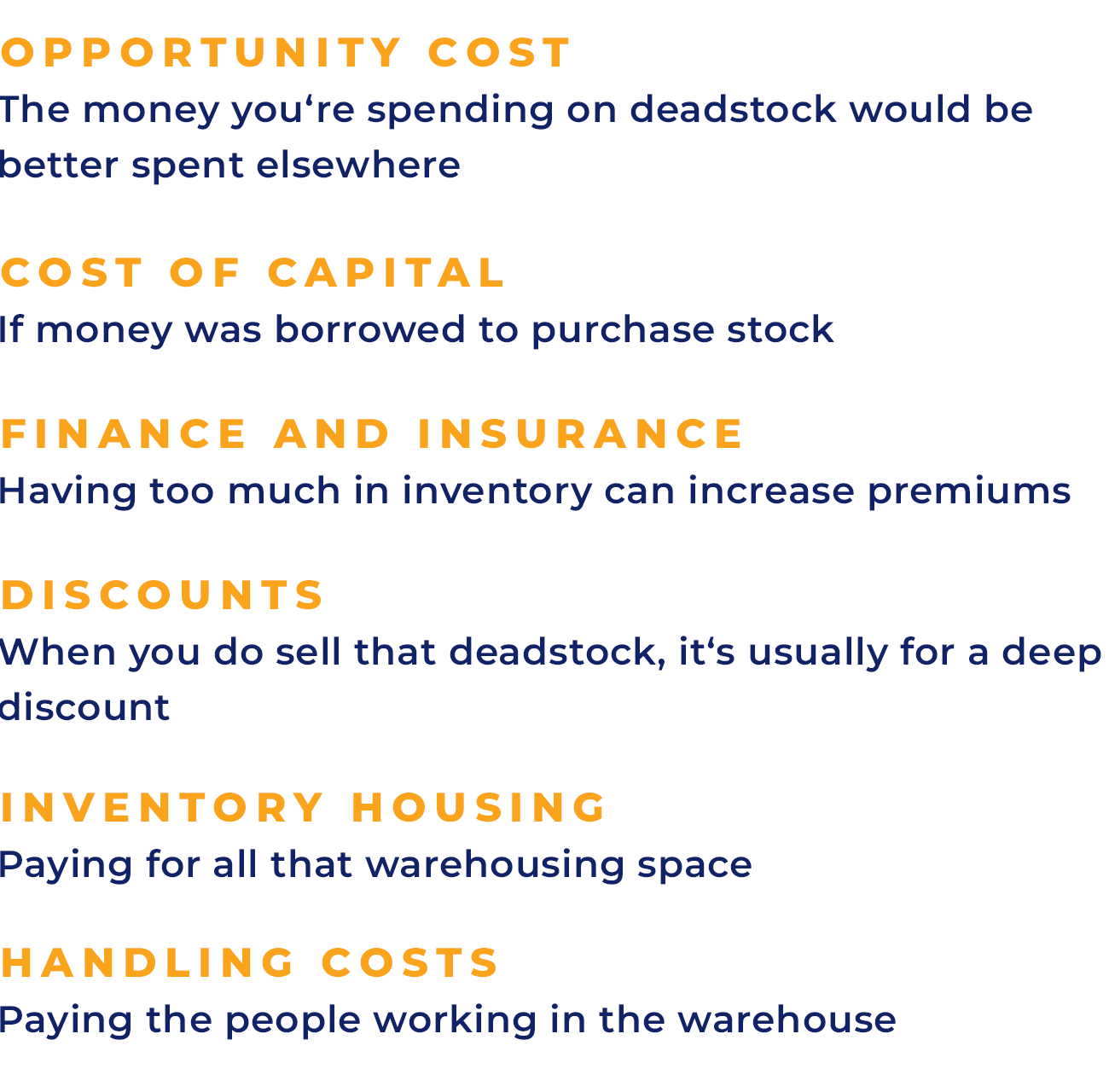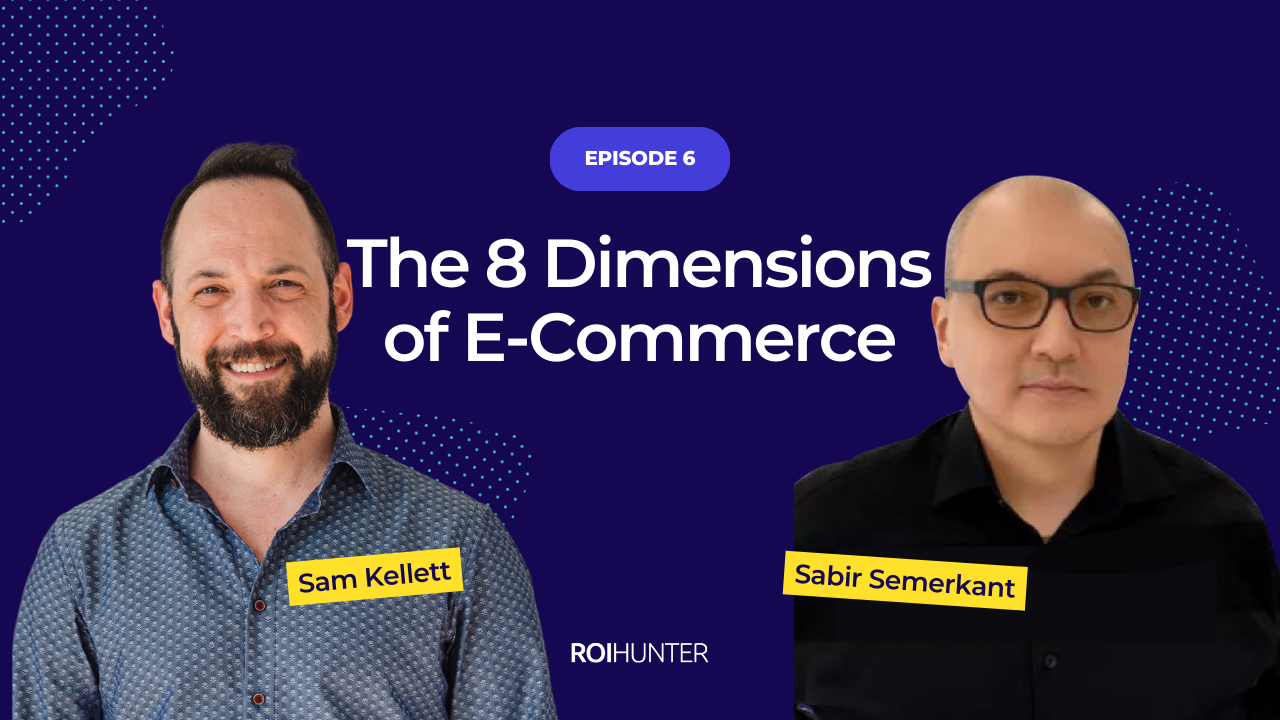Burberry made headlines in 2018 after burning £28.9 million worth of deadstock, (adding up to a total of £90 million + in deadstock burned by Burberry over five years). Burberry’s story isn’t unique. That same year, H&M alone was sitting on $4.3 Billion in unsold clothing. These examples may be from large brands, but dealing with deadstock is a problem that just about every retailer has to handle.
Beyond the clear environmental concerns surrounding it, deadstock also creates profitability issues for just about every e-commerce brand on the market. A write-up from Manufacturing.net detailed the actual cost of deadstock, including factors like:

In total, they found these costs can accumulate to be 25-30% more than the value of the inventory itself. With that in mind, here are four stories of how companies solve the problem with four different methods: reposition, reduce, reuse, and recycle.
Reposition
Before disposing of (or burning) your deadstock, try repositioning it as a giveaway, or into a bundled offer:
- Increase the perceived value of items by bundling deadstock with them at no additional cost. Through this, your deadstock becomes a value driver.
- Create themed packs with deadstock (e.g. “Summer Style,” which could include a deadstock hat, matching glasses, and a belt that's on sale).

- Give away some of the deadstock as gifts to customers, be it sign up gifts for new customers or loyalty gifts for VIPs.
- Use deadstock items as special daily deals. Each day, feature a new item from your deadstock with a clearance price.

Get creative with your deadstock ideas, and don’t be afraid to lose some margin: it’s better to get value from that deadstock now than to lose value waiting for a more optimal opportunity.
Reduce
The best way to increase profitability around your deadstock is to reduce the amount of it you end up with. Of course, this is easier said than done; it’s difficult to predict the demand for products, and it’s often more cost-effective to have a product surplus than a deficit.
That said, the first step in deadstock reduction is to make sure you have a robust inventory management system in place. By making use of something the reorder point formula, you can form a strong idea of how much stock you need, and when you need it. That alone goes a long way toward reducing deadstock.

The ROI Hunter Product Performance Management (PPM) platform takes things even further, offering product-level insight into e-commerce performance.
The software gathers and organizes performance data on each individual product (margin, returns, CTR, etc.). Marketers can then filter their catalogue by actual performance, and quickly find which of their products are likeliest to become deadstock. With this understanding, they can test different promotions for those products, as well as reduce production/orders before they end up with too much stock on hand.
Reuse
Okay, reduction is great, but what do you do if you already have a warehouse full of depreciating deadstock?
UK-based company, Parker Lane Group, is one of a number of companies working with retailers to reuse their unwanted stock. (They also specialize in reverse-logistics, helping retailers deal with the returns process, as well as with recycling unusable product).
Parker Lane’s method boasts a 35% increase in margin on excess inventory by acting on the retailer’s behalf to find the right markets for their unwanted stock. Their goal is to help companies be more economically sustainable, while also ensuring they get maximum value for their materials.
Other companies, like Queen of Raw, have opened the deadstock market to consumers and retailers, offering even small quantities of unused fabrics for sale.
Recycle
At the end of the road, there will always be materials too damaged to sell, or scraps left-over from manufacturing. Some amount of product will be left after reduction, and not viable for reuse. In those cases, it’s time to recycle.
Seattle-based company, Evrnu, is taking recycling to the next level by turning that recycled material into a new textile that can be reused. They start by diverting textiles from the landfill or incinerator, then break them down to the molecular level. The broken down materials are then engineered into a new type of fiber, which is spun into yarn. Evrnu works with a number of designers and brands (including Adidas and Levi Strauss) who turn this new material, called “NuCycl,” into garments for sale.
Evrnu will be scaling their business through licensing, with the aim of allowing the fashion industry to continue to grow without the need for new cotton or petroleum-based fibers.
Final Thoughts
To create a company with a core focus on sustainable profit, factors like dead stock and return rates must be considered as part of the overall strategy. If taking care of deadstock isn’t your responsibility, you can recommend strategies to those who handle it: buyers/category managers, the marketers who would be promoting it, potentially even someone in finance to help identify costs.
Deadstock affects the profitability of just about every company selling consumer goods. As retailers continue to fight for market share, even at the expense of their margins, these retailers need to make sure they’re saving every penny they can, wherever they can, in order to compete.


.png)
